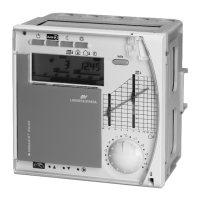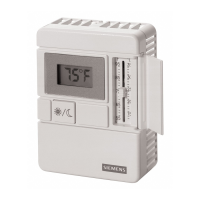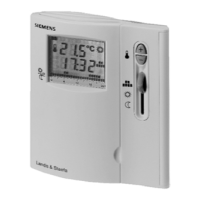8.2 Slave telegram
The structure of the slave telegram is.
...4 5 6 ... 12 13+14
... Identification Message Checksum
Byte 5: Identification: 41h (‚A‘) is supported.
Byte 6: Status device
Bit 0 1: power supply failure during operation
(e.g. heating current alarm)
Bit 1, 2 (fixed) 0 0
Bit 3 1: other internal error, e.g. E.1, E.2 ...
Bit 4, 5, 6, 7: (fixed)0110
Byte 7-10: Channel 1
• Process value with command for closed-loop control: (= In.1)in0,1
degrees Celsius
(3 digits before, 1 digit behind the decimal point); negative
temperatures up to –99 degrees Celsius are possible (1st byte = 2Dh)
• Output variable
with command for positioning: in % (= Ypid)
(3 digits before, 1 digit behind the decimal point)
Byte 11: Channel 1 : status alarms 1
Bit 0 1: switched on ( C.Off =0)
Bit 1 1: lowering on (with SP.2 =1)
Bit 2 0: closed-loop control (automatic),
1: positioning (manual mode)
Bit 3 (fixed) 0
Bit 4, 5, 6, 7 : (fixed)0110
Byte 12: Channel 1 : status alarms 2
Bit 0 1: lead break, e.g.: LooP =1
Bit 1 1: only undercurrent, e.g. HCA =1
Bit 2 1: sensor defective, e.g. FbF.1 , Sht.1 , POL.1
Bit 3 0
Bit 4, 5, 6, 7 : (fixed)0110
Byte 13-14: Checksum
Protocol for hot-runner systems
Operating note KS 50-1 TCont 21 Slave telegram

